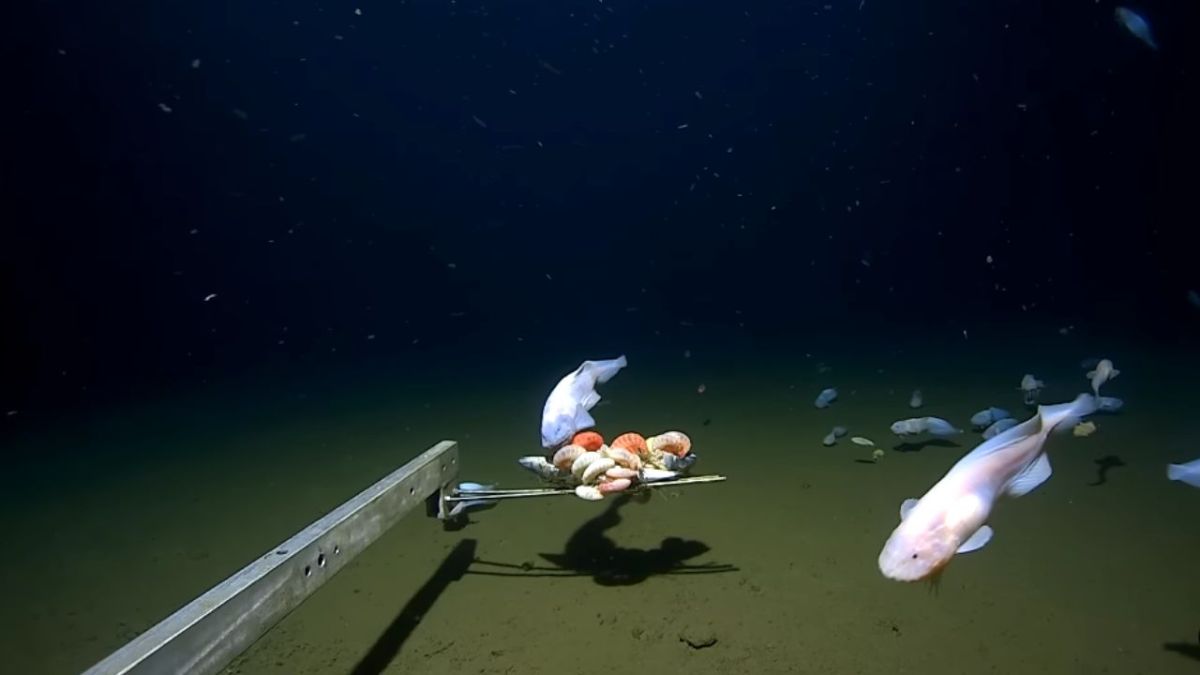They managed to film fish more than 5 miles below the ocean surface and the team responsible is believed to be approaching the maximum depths at which fish can be found.
At the western edge of the Pacific Ocean lie a series of trenches up to 36,000 feet deep, where the Pacific plate, normally 13,780 feet below the surface, dips under various continental plates.
It was right there, in the Izu-Ogasawara Trench, that scientists filmed an unknown species of pseudoliparisa type of snail fish, at an incredible depth of 5.17 miles, breaking the previous record for the deepest fish found at 5.07 miles, in the famous Mariana Trench.
Here you can see the fish at a depth of 5.17 miles:
The Mariana Trench is a depression in the seabed found in the western Pacific Ocean, and it is one of the deepest known and, therefore, the most studied, but it may not be the most biologically interesting.
“Everyone thinks that depth is the most important thing in these trenches,” Professor Alan Jamieson of the Minderoo-UWA Deep Sea Research Center, who led the expedition, told IFLScience.
Although depth, and the immense pressure that comes with it, shapes life in these environments, it is not the only factor. “Temperature can also be important,” Jamieson added.
Izu-Ogasawara is the warmest of the pits or trenches and, therefore, “most hospitable to life.” Combined with the high productivity of the waters around Japan, which leads to more material sinking into this trench than into the Marianas, the conditions for life are much more attractive.
However, Jamieson explained that a team operating the research ship DSSV Pressure Drop reasoned that greater heat at Izu-Ogasawara would allow the creatures to live at greater depths, so they decided to explore.
“Japanese trenches are amazing places to explore; they are so rich with life, even deep down,” Jamieson said in a statement.
There are no warmer trenches of similar depth, so “if anyone finds fish at greater depths, it won’t be by much,” he added.
The fact that snailfish have adapted to depths greater than any other vertebrate can survive is intriguing because they are generally not a deep-sea genus. Most snail fish live in shallow water.s.
At these depths, the 8- to 10-inch fish live on small crustaceans, which in turn feed on material that falls into the trench when surface water creatures die.
Keep reading:
Guinness World Record: The world’s longest beard reaches 8 feet 3 inches long
Man finds 200-year-old clam in Florida and was going to cook it
They find in Egypt more than 2,000 mummified ram heads in a temple of Pharaoh Ramses II
